SMBs have a lot to gain from investing in their technology and setting up their tech stack to scale as the business grows. The right technology can provide opportunities for innovations in the work being done, efficiency increases in employee productivity, and improved security outcomes for the business’ IT infrastructure. While navigating the complexities of developing a technology stack can be challenging, small businesses can work closely with a trusted IT consultant to find the right IT solutions for their unique environments and set the business up for success. In this article, we want to cover some best practices for small business IT growth and how IT consultants can help!
Small Business IT Planning

Small business IT strategy must start with strong planning and a thorough assessment of what the business’ technology footprint looks like. Businesses should take time to determine pain points in the use of technology for employees and IT staff so that early technology adoption can be the most effective. For example, do hybrid workers at the company have difficulty accessing sensitive data for work? Or can security solutions be put in place to better secure mobile endpoints that need to access the network from different locations across the country? By identifying the immediate needs of the company, a business can create actionable plans to move forward with.
Once the current state of the business is understood, SMBs can look to the future and establish goals to work towards. This can focus on product quality improvements, more streamlined workflows, and creating time for employees to innovate their work with technology. Focusing on scaling technology and IT infrastructure is essential for a growing company, but the technology introduced into a small business IT infrastructure must enable workers to have the time and resources needed to put their tools to the best use and learn how to work with them securely.

Data Collection and Network Monitoring

When building out small business IT strategy, it is critical to identify key pieces of data collection necessary to measure success. When establishing technology goals or looking for solutions, take into consideration the data a tool can collect and how that data can be capitalized. For example, a retail store may need to improve its inventory tracking to lower the cost of ordering products. A simple solution could track inventory in a database and provide alerts when an item needs to be restocked. However, a better solution could analyze inventory movement by taking into account order details, trend lines on sales throughout the year, and other points of data that allow for a more detailed view of business operations.
Identifying the data points needed to accomplish the business’ goals may even require IT solutions of their own. A business with smart devices and integrated solutions, such as cloud managed Meraki technology, can monitor their physical premises, track building temperatures, manage inventory data, and assess energy use over time. Small business IT solutions can also focus heavily on network monitoring so that your IT staff can understand how network resources are being used and identify malicious activity before it has a chance to do damage to the network.
It is recommended to consider hardware, software, and cloud managed solutions that allow small businesses to collect data and monitor their network activity closely. Finding the best solutions for your business can be challenging, and that’s why Robinett Consulting recommends developing a relationship with a reliable IT consultant or managed service provider (MSP). An MSP can help streamline the decision-making process for which smart devices or software-as-a-service (SaaS) solutions to implement in your business while balancing the business’ budget and access to the data collection and monitoring services required to meet goals.
Zero Trust

When implementing new small business IT solutions, network security should always be a high priority. As a business grows its technology stack, moving towards a zero trust approach to cybersecurity can provide enormous benefits for network security and help prevent new technologies from becoming security risks.
Zero trust model for security is founded on core principles that help ensure every connection to the network and all activity on the network are verified as trustworthy at every step. Key zero trust principles include:
- Strong Policies: zero trust security solutions can’t be helpful without the right policies backing their use. Cybersecurity policies built on current cybersecurity best practices and intelligence gathered by security tools go a long way in keeping employees informed and help them form strong cybersecurity habits.
- Verification of Trust: Account log ins must be verified with multifactor authentication (MFA) tools and network activity must be deemed trustworthy regularly. Devices, users, and applications should regularly undergo validation to best ensure that only the right people are gaining access to the network and that each device’s health meets policy.
- Edge Security: Every business’ IT environment will look different, but a zero trust model pushes security to the edge of the network so that users can authenticate and work securely from anywhere in the world.
- Quick Remediation: Security solutions will identify threats quickly and often remediate them automatically. No matter how a threat is handled, the security solutions in a small business IT environment must provide detailed alerts and notifications, so IT staff can make more informed security decisions after an incident.
For more information on a zero trust model to cybersecurity, read our zero trust article!
Planning with an IT Consultant

Improving a small business IT infrastructure can be challenging even for the most prepared companies. From gaps in knowledge to allocating necessary resources for implementation, a business can face a wide variety of hurdles as they plan and improve their IT infrastructure. IT consultants can be a valuable resource in this process because they have the ability to provide thorough assessments of the IT environment to provide valuable insights on how well solutions are performing, and they can help with the overall strategy for improvement. SMBs should consider working with a consultant early or bringing one on at any stage in their technology improvement initiatives.
Alongside the technical expertise an IT consultant can provide, many can also act as a managed service provider and value-added reseller (VAR). This means an IT consultant can make the best recommendations for services based on a business’ needs and then provide those solutions at reasonable costs. Working with a consultant in this away allows a business to know they are receiving exactly the services they need while having a trustworthy point of contact to help with implementation and troubleshooting. As a VAR, a consultant can also provide a business with the technology they need for equipping employees or setting up networking hardware that will scale with the business well into the future!

Summary
Technology investments provide SMBs with a wealth of resources that can improve their cybersecurity and offer employees the flexibility needed to innovate and perform their best. Small business IT improvements demand a lot of attention to detail and resources to be done right, however. This means businesses must identify their current technology needs, strategize the solutions that can best help solve problems or gather data, and implement those solutions securely. For businesses that want to streamline their technology projects and improve the quality of the technology stack while staying within budget, an IT consultant can provide a wide range of services ideal for growing businesses that need a cost-effective means of working with IT specialists.




